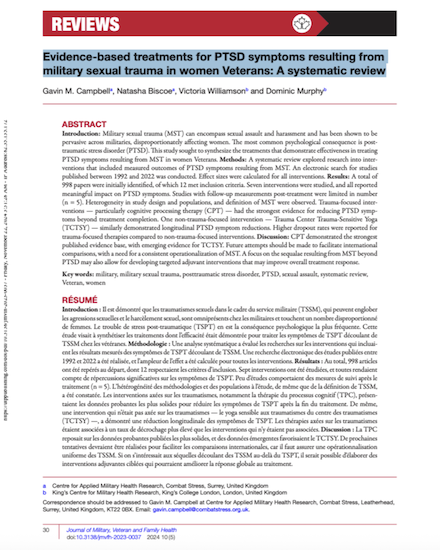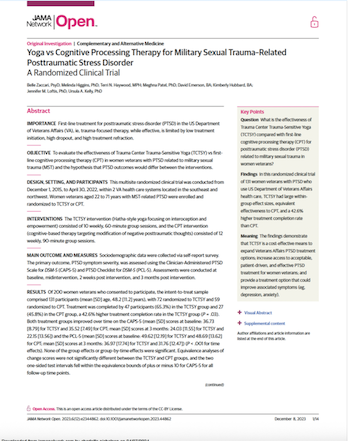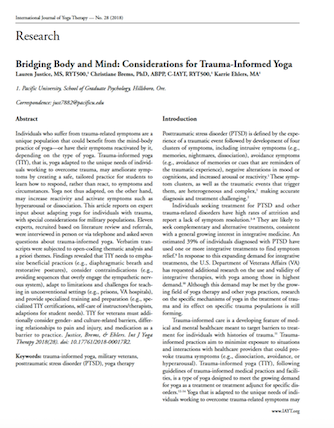
Evidence-based treatments for PTSD symptoms resulting from military sexual trauma in women Veterans: A systematic review
Seven interventions were studied, and all reported meaningful impact on PTSD symptoms. CPT demonstrated the strongest published evidence base, with emerging evidence for TCTSY.

Yoga vs Cognitive Processing Therapy for Military Sexual Trauma–Related Posttraumatic Stress Disorder: A Randomized Clinical Trial.
TCTSY was equivalent to CPT (trauma-focused cognitive processing therapy, the current gold standard treatment within the US Department of Veterans Affairs) in reducing PTSD symptom severity, and. had higher completion rates.

Bridging Body and Mind: Considerations for Trauma-Informed Yoga (with special considerations for military populations)
Trauma-informed yoga must emphasise practices e.g., diaphragmatic breath, restorative postures; avoid sequences that overly engage the sympathetic nervous system; and adapt to challenges of teaching in e.g., prisons, hospitals. TIY for vets must also consider gender- and culture-related barriers and differing relationships to pain and injury, among other things.
